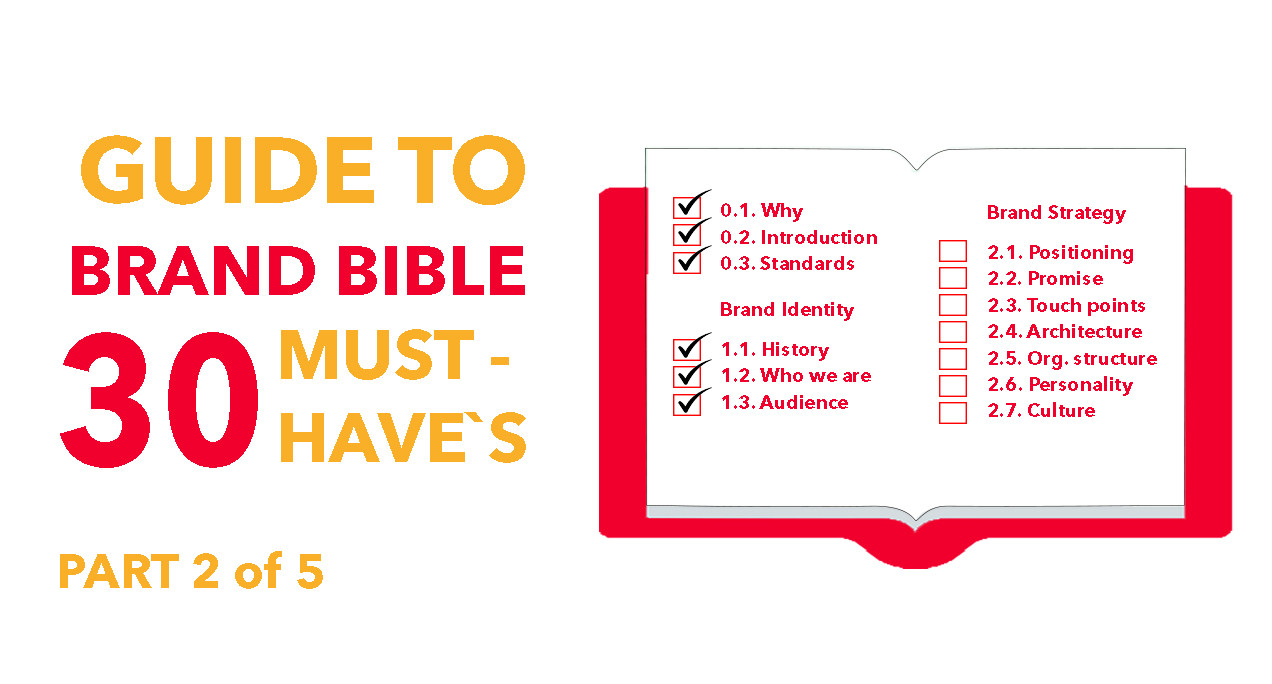 The capacity to differentiate oneself and make an indelible mark is critical in a world where firms are constantly competing for consumers’ attention. The Brand Bible, which is a comprehensive guide for the development of a distinctive identity, becomes the secret weapon of successful businesses. This essay delves into the world of branding, discussing the intricacies of developing an unforgettable identity that strikes a chord with people and goes beyond the typical.
The capacity to differentiate oneself and make an indelible mark is critical in a world where firms are constantly competing for consumers’ attention. The Brand Bible, which is a comprehensive guide for the development of a distinctive identity, becomes the secret weapon of successful businesses. This essay delves into the world of branding, discussing the intricacies of developing an unforgettable identity that strikes a chord with people and goes beyond the typical.
A Brand Bible is essentially more than just a paper; it serves as a guide through the complex process of developing a brand. Every aspect, from establishing the brand’s values and personality to selecting colours, creating a narrative, and designing visual elements such as logos and typography, is vital in creating an identity that does more than just stand out; it establishes a bond.
Come with us as we investigate the science and art of branding, discovering why it’s crucial to have a unique identity and what makes a brand iconic. No matter your level of experience in marketing, running a small business, or dreaming of becoming your own boss, this article will help you understand branding better and provide you the tools you need to build a memorable brand. Join me on this adventure as I reveal how a well-written Brand Bible may help you realise your brand’s maximum potential.
The significance of developing one’s own unique identity
A brand is an impression, not merely a logo or merchandise. Building a unique identity for your brand is a certain way to get people to remember it, believe in it, and stick with it.
What Makes a Good Brand Bible
The core of your brand can be defined and communicated through a well-crafted Brand Bible, which includes several components. Every part, from the visual components to the messaging standards, is important in creating the identity of your brand.
Establishing the Character and Principles of Your Brand
An independent being with character and principles, your brand is you. Having these elements defined in your Brand Bible lays the groundwork for constant communication and strikes a chord with your intended audience.
Selecting Visual Components and Brand Colours
Visual features, including colours, can convey a lot of meaning. In this part, we’ll look at the psychology of colour theory and the role of visual elements in developing a brand’s visual language.
Creating an Intriguing Brand Narrative
The significance of an interesting brand story in today’s marketing and branding environment, with its cutthroat competition and short attention spans, is immense. Brand narratives are more than simply stories; they are the fabric that binds a company’s core beliefs, history, and products into an interesting and captivating whole. Learn the ins and outs of creating a captivating brand story that readers will remember long after you’ve finished promoting your product.
The Influence of Narratives
The skill of storytelling is crucial to an engaging brand story. We are hardwired from the start to relate to narratives. Evoking emotions, building relationships, and creating a sense of resonance with your audience are all possible through a well-crafted tale. We delve into the storytelling aspects that contribute to a captivating and unforgettable brand narrative.
Discovering What Your Brand Is All About
You must first establish your brand’s core values before you can begin to write your story. What is the essence of your brand? How does it represent principles? In this section, we will delve into the essential components that form the basis of a brand story, guaranteeing its credibility and uniformity.
Recognising Your Target Market
An engaging brand story is one that speaks to the intended consumers. To craft a story that resonates with your target audience, it’s important to know their background, interests, and goals. In order to make your story more impactful, we explore methods for analysing and segmenting your audience.
Developing an Identity for Your Brand
The unique tone and character that your brand conveys via its stories is its voice. The tone and style of your brand voice greatly influence how your narrative is viewed, whether it’s amusing, authoritative, or empathic. In this portion, we’ll go into the details of developing a unique voice for your brand.
Maintaining Uniformity Across Devices
Maintaining cohesion across all mediums is essential for an engaging brand story. Your brand’s identity is strengthened when your narrative remains consistent across all platforms, including your website, social media, and offline channels. To keep your message consistent across all of your platforms, we’ll go over several practical ways.
Telling Tales using Images
Maybe just words won’t cut it. You may make your story more interesting and easier to remember by using graphic components. In this section, we’ll look at how visual storytelling—including films, graphics, and the design style as a whole—can enhance the impact of your brand’s narrative.
Developing Your Storyline Through Time
Your story needs to change and adapt as your brand does. Disinterest can result from stagnation. In order to keep up with the ever-changing nature of your business and the market, this section will walk you through the steps of developing a new story.
Assessing the Results
In what ways can you gauge the success of your brand’s story? Identifying your narrative’s strengths and places for improvement, we go over important metrics and tactics for gauging its performance.
Honesty in Promoting Brands
The significance of speaking stories from the heart is discussed in this section, which is written during a time when honesty is key. Audiences are able to tell when a brand is being genuine, and that authenticity fosters loyalty and trust. We explore methods to make your story more genuine.
Demonstrating Brand Values with Stories
The story you tell revolves on your brand’s principles. In order to connect with customers that share your brand’s values, this section delves into how to incorporate and highlight those principles in your narrative without any hitches.
An Eye-Catching Foundation for Your Brand: Logo Design
Your brand’s logo serves as its visual fulcrum. In this part, we’ll go into logo design and talk about how to make a logo that captures your brand’s soul through symbolism, simplicity, and versatility.
Fonts and Their Effects on Logos
Making sure your brand’s written language is consistent and easy to recognise is what typography is all about. The subtleties of typeface used for brand identification are discussed in this section.
Standards for Reliable Brand Communication
In branding, consistency is king. In order to maintain cohesion across all of your communication channels and platforms, it is important to establish clear guidelines for brand message.
Taking Your Brand Bible and Making It Platform Independent
Brands engage with customers in the digital world through many channels. The key to a consistent and memorable brand experience across all platforms is an up-to-date Brand Bible.
Promoting Openness and Inclusivity
An inclusive and approachable brand makes a real difference. Here we’ll go over some reasons why it’s crucial to think about your target demographic and make sure your brand is inclusive.
How to Tell If Your Brand Identity Is Working
What metrics can you use to evaluate the success of your brand identity? In this part, we will go over some ways to measure your brand’s success, including how well-known your brand is and how satisfied your customers are.
The Changing Face of Your Brand Handbook
Because brands are ever-changing, brand bibles should also be. To maintain its currency and usefulness, your Brand Bible should be reviewed and updated on a regular basis, as discussed in this section.
Avoiding Frequent Branding Errors
Sometimes, brands make mistakes, even when they mean well. If you want your journey towards a unique identity to go more smoothly, this section will show you the typical traps and errors to avoid.
Examples of Effective Brand Redesign
Practical instances give theories a sense of reality. Here you can find examples of how strategic branding has revitalised the reputation of other brands through case studies of their own successful makeovers.
In summary
Finally, after delving into the complexities of brand identification, we have discovered the Brand Bible’s immense influence and importance. Not only is it a guide, but it also serves as the foundation of a brand’s story, a representation of its principles, and an audience-resonating visual symphony.
Building a unique identity is not a one-and-done task, but rather a continuous cycle of change, improvement, and evaluation. Intangibles like brand recognition, opinion, and loyalty are just as important as hard numbers for measuring a company’s success.
Lessons learnt from successful case studies and awareness of frequent dangers become invaluable as organisations traverse the evolving terrain of the market. The Brand Bible is an evolving document that reflects the ever-changing nature of the brand it stands for.
The goal of this exploration is to help anyone, from seasoned brand strategists to rookie entrepreneurs, create a brand that does more than just get people to recognise it; it creates an emotional connection with them.
Never forget that your brand is more than just a logo; it’s a promise, a story, and an experience as you begin or continue your branding journey. You are not merely building an identity when you put money into a professionally written Brand Bible; you are laying the groundwork for a lasting legacy.
FAQs
At what intervals should the Brand Bible be revised?
Market dynamics and company progress determine the frequency of updates. Still, it’s wise to check in with it once a year to make sure it’s still relevant.
Do you think a Brand Bible would be useful for a small company?
Without a doubt. A Brand Bible helps businesses of all sizes to stand out from the crowd by giving them a distinct identity.
In developing a company’s reputation, how important is narrative?
Brands become more approachable and human when told a story. It makes people feel something, which increases their loyalty to the brand and their ability to remember it.
Is there a way for a brand to make sure that its identity is inclusive?
To be inclusive, one must take into account a wide range of viewpoints and target demographics. Brands should make an effort to be inclusive and accessible in their messaging.
Are monetary indicators the sole way to gauge a brand’s performance?
Brand equity, customer perception, and brand recognition are all important KPIs to track in addition to financial data.
for further information visit:https://www.fabulaes.com/











